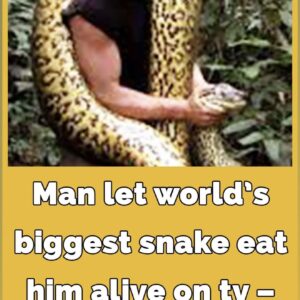Joe DiMeo, a 22-year-old from New Jersey, endured severe injuries in a car accident in July 2018. He has made history as the first individual in the world to successfully receive a face and double hand transplant.
A 22-year-old man from New Jersey, who experienced horrific injuries in a car accident, has achieved the distinction of being the first person globally to undergo a successful face and double hand transplant, as announced by his medical team on Wednesday.
Joe DiMeo suffered third-degree burns covering more than 80 percent of his body after falling asleep while driving home from a night shift in July 2018, which resulted in his car flipping over and subsequently exploding.
Although a passerby rescued him, DiMeo’s injuries included amputated fingertips, significant facial scarring, and the loss of his lips and eyelids, which impacted his vision and hindered his ability to live a normal, independent life. He spent four months in a hospital burn unit, where he underwent multiple grafts, received life-saving blood transfusions, and was placed in a medically induced coma for nearly two and a half months.
A file photo shows Joe DiMeo recovering after the transplant. (AFP)
However, DiMeo expressed that he now has a “second chance at life” and conveyed a message of hope.
“There is always light at the end of the tunnel; never give up,” DiMeo stated during a press conference organized by NYU Langone Health, which performed the groundbreaking procedure utilizing 3D printed cutting-guides. The surgery took place on August 12, 2020, and lasted around 23 hours, involving a team of 96 healthcare professionals, led by surgeon Eduardo Rodriguez, the director of the Face Transplant Program at NYU Langone.
“We all agree without exception that Joe is an exemplary patient,” stated Rodriguez. “He is the most driven patient I have ever encountered.” This marked the fourth face transplant performed by Rodriguez, and it was the first one conducted under his supervision. There have been two other simultaneous attempts at face and hand transplants, both of which were unsuccessful. One patient succumbed to complications related to an infection, while the other had to undergo the removal of their hands due to their inability to thrive.
Risky procedure
Locating a donor necessitated a nationwide search comparable to “finding a needle in a haystack,” according to Rodriguez. This was due to a test known as a panel reactive antibody, which indicated that he would reject 94 percent of potential donors, leaving only a six percent chance of finding a compatible match.
Ultimately, a precise match was located in the state of Delaware, facilitated by the Gift of Life Donor Program. The transplants included both hands up to the mid-forearm, incorporating the radius and ulna bones, three primary nerves to the hand, six blood vessels that required vascular connections, and 21 tendons.
The complete face of the donor was also transplanted, encompassing the forehead, eyebrows, both ears, nose, eyelids, lips, and segments of the underlying skull, cheek, nasal, and chin bones. The high-risk procedure, which had the potential to fail and leave DiMeo in a worse condition than before, or even result in his death, turned out to be successful.
“The fine motor skills have continued to enhance,” remarked Rodriguez. “He is eager to engage in sports, has a passion for golf, and wishes to return to the course. I am consistently amazed by the amount of weight he can lift and the strength of his grip.” DiMeo read from a brief statement expressing his gratitude to his medical team, family, and the “sacrifice” and “selflessness” of his unnamed deceased donor.
He likened the process of learning to use his new hands to a baby grasping objects for the first time. “The most challenging aspect is recognizing that I am capable, but my hands are not yet responsive. I must continue to practice.”





